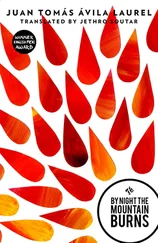Babur - The Bābur-nāma
Здесь есть возможность читать онлайн «Babur - The Bābur-nāma» — ознакомительный отрывок электронной книги совершенно бесплатно, а после прочтения отрывка купить полную версию. В некоторых случаях можно слушать аудио, скачать через торрент в формате fb2 и присутствует краткое содержание. Жанр: foreign_antique, foreign_prose, на английском языке. Описание произведения, (предисловие) а так же отзывы посетителей доступны на портале библиотеки ЛибКат.
- Название:The Bābur-nāma
- Автор:
- Жанр:
- Год:неизвестен
- ISBN:нет данных
- Рейтинг книги:4 / 5. Голосов: 1
-
Избранное:Добавить в избранное
- Отзывы:
-
Ваша оценка:
- 80
- 1
- 2
- 3
- 4
- 5
The Bābur-nāma: краткое содержание, описание и аннотация
Предлагаем к чтению аннотацию, описание, краткое содержание или предисловие (зависит от того, что написал сам автор книги «The Bābur-nāma»). Если вы не нашли необходимую информацию о книге — напишите в комментариях, мы постараемся отыскать её.
The Bābur-nāma — читать онлайн ознакомительный отрывок
Ниже представлен текст книги, разбитый по страницам. Система сохранения места последней прочитанной страницы, позволяет с удобством читать онлайн бесплатно книгу «The Bābur-nāma», без необходимости каждый раз заново искать на чём Вы остановились. Поставьте закладку, и сможете в любой момент перейти на страницу, на которой закончили чтение.
Интервал:
Закладка:
895
Mr. Erskine thought it probable that the first of these routes went through Kanigūram, and the second through the Ghwālirī-pass and along the Gūmāl. Birk , fastness, would seem an appropriate name for Kanigūram, but, if Bābur meant to go to Ghaznī, he would be off the ordinary Gūmāl-Ghaznī route in going through Farmūl (Aūrgūn). Raverty’s Notes give much useful detail about these routes, drawn from native sources. For Barak (Birk) see Notes pp. 88, 89; Vigne, p. 102.
896
From this it would seem that the alternative roads were approached by one in common.
897
tūmshūq , a bird’s bill, used here, as in Selsey-bill, for the naze (nose), or snout, the last spur, of a range.
898
Here these words may be common nouns.
899
Nū-roz, the feast of the old Persian New-year (Erskine); it is the day on which the Sun enters Aries.
900
In the [Turkī] Elph. and Ḥai. MSS. and in some Persian ones, there is a space left here as though to indicate a known omission.
901
kamarī , sometimes a cattle-enclosure, which may serve as a sangur . The word may stand in one place of its Bābur-nāma uses for Gum-rāhī (R.’s Notes s. n. Gum-rāhān).
902
Index s. n.
903
Vigne, p. 241.
904
This name can be translated “He turns not back” or “He stops not”.
905
i. e. five from Bīlah.
906
Raverty gives the saint’s name as Pīr Kānūn (Ar. kānūn , listened to). It is the well-known Sakhī-sarwār, honoured hy Hindūs and Muḥammadans. (G. of I., xxi, 390; R.’s Notes p. 11 and p. 12 and JASB 1855; Calcutta Review 1875, Macauliffe’s art. On the fair at Sakhi-sarwar ; Leech’s Report VII, for the route; Khazīnatu ’l-asfiyā iv, 245.)
907
This seems to be the sub-district of Qandahār, Dūkī or Dūgī.
908
khar-gāh , a folding tent on lattice frame-work, perhaps a khibitka .
909
It may be more correct to write Kāh-mard, as the Ḥai. MS. does and to understand in the name a reference to the grass( kāh ) – yielding capacity of the place.
910
f. 121.
911
This may mean, what irrigation has not used.
912
Mr. Erskine notes that the description would lead us to imagine a flock of flamingoes. Masson found the lake filled with red-legged, white fowl (i, 262); these and also what Bābur saw, may have been the China-goose which has body and neck white, head and tail russet (Bellew’s Mission p. 402). Broadfoot seems to have visited the lake when migrants were few, and through this to have been led to adverse comment on Bābur’s accuracy (p. 350).
913
The usual dryness of the bed may have resulted from the irrigation of much land some 12 miles from Ghaznī.
914
This is the Luhūgur (Logar) water, knee-deep in winter at the ford but spreading in flood with the spring-rains. Bābur, not being able to cross it for the direct roads into Kābul, kept on along its left bank, crossing it eventually at the Kamarī of maps, s.e. of Kābul.
915
This disastrous expedition, full of privation and loss, had occupied some four months (T.R. p. 201).
916
f. 145b.
917
f. 133b and Appendix F.
918
They were located in Mandrāwar in 926 AH. (f. 251).
919
This was done, manifestly, with the design of drawing after the families their fighting men, then away with Bābur.
920
f. 163. Shaibāq Khān besieged Chīn Ṣufī, Sl. Ḥusain Mīrzā’s man in Khwārizm (T. R. p. 204; Shaibānī-nāma , Vambéry, Table of Contents and note 89).
921
Survey Map 1889, Sadda. The Rāgh-water flows n.w. into the Oxus (Amū).
922
birk , a mountain stronghold; cf. f. 149b note to Birk (Barak).
923
They were thus driven on from the Bārān-water (f. 154b).
924
f. 126b.
925
Ḥiṣār, presumably.
926
Here “His Honour” translates Bābur’s clearly ironical honorific plural.
927
These two sult̤āns, almost always mentioned in alliance, may be Tīmūrids by maternal descent (Index s. nn. ). So far I have found no direct statement of their parentage. My husband has shewn me what may be one indication of it, viz. that two of the uncles of Shaibāq Khān (whose kinsmen the sult̤āns seem to be), Qūj-kūnjī and Sīūnjak, were sons of a daughter of the Tīmūrid Aūlūgh Beg Samarkandī (Ḥ.S. ii, 318). See Vambéry’s Bukhārā p. 248 note.
928
For the deaths of Taṃbal and Maḥmūd, mentioned in the above summary of Shaibāq Khān’s actions, see the Shaibānī-nāma , Vambéry, p. 323.
929
Ḥ.S. ii, 323, for Khusrau Shāh’s character and death.
930
f. 124.
931
Khwāja-of-the-rhubarb, presumably a shrine near rhubarb-grounds (f. 129b).
932
yakshī bārdīlār , lit. went well, a common expression in the Bābur-nāma , of which the reverse statement is yamānlīk bīla bārdī (f. 163). Some Persian MSS. make the Mughūls disloyal but this is not only in opposition to the Turkī text, it is a redundant statement since if disloyal, they are included in Bābur’s previous statement, as being Khusrau Shāh’s retainers. What might call for comment in Mughūls would be loyalty to Bābur.
933
Elph. MS. f. 121b: W. – i-B. I.O. 215 f. 126 and 217 f. 106b; Mems. p. 169.
934
tāgh-dāmanasī , presumably the Koh-dāman, and the garden will thus be the one of f. 136b.
935
If these heirs were descendants of Aūlūgh Beg M. one would be at hand in ‘Abdu’r-razzāq, then a boy, and another, a daughter, was the wife of Muqīm Arghūn . As Mr. Erskine notes, Musalmāns are most scrupulous not to bury their dead in ground gained by violence or wrong.
936
The news of Aḥmad’s death was belated; he died some 13 months earlier, in the end of 909 AH. and in Eastern Turkistān. Perhaps details now arrived.
937
i. e. the fortieth day of mourning, when alms are given.
938
Of those arriving, the first would find her step-daughter dead, the second her sister, the third, his late wife’s sister (T. R. p. 196).
939
This will be the earthquake felt in Agra on Ṣafar 3rd 911 AH. (July 5th 1505 AD. Erskine’s History of India i, 229 note). Cf. Elliot and Dowson, iv, 465 and v, 99.
940
Raverty’s Notes p. 690.
Читать дальшеИнтервал:
Закладка:
Похожие книги на «The Bābur-nāma»
Представляем Вашему вниманию похожие книги на «The Bābur-nāma» списком для выбора. Мы отобрали схожую по названию и смыслу литературу в надежде предоставить читателям больше вариантов отыскать новые, интересные, ещё непрочитанные произведения.
Обсуждение, отзывы о книге «The Bābur-nāma» и просто собственные мнения читателей. Оставьте ваши комментарии, напишите, что Вы думаете о произведении, его смысле или главных героях. Укажите что конкретно понравилось, а что нет, и почему Вы так считаете.











